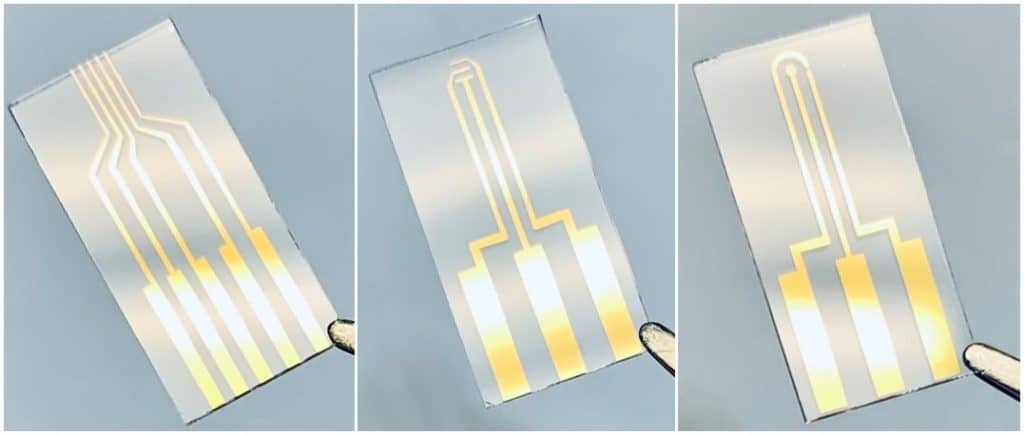Using Patterned Electrodes for Chemical Sensors
Small-scale patterned electrodes for scientific micro-electromechanical systems (MEMS) are intricate parts usually created by additive manufacturing (AM). At Platypus Technologies, we generate patterned gold thin films on glass created via e-beam metal evaporation using a titanium adhesion layer to enhance the mechanical stability of the film.
The gold films of the patterned electrodes exhibit a high level of purity (99.999%) in addition to low surface roughness (typically down to nanometer-scale roughness). These patterned electrodes are produced without photoresist or organic solvents which might otherwise contaminate the surface of the gold.

Patterned electrodes are well-suited for micro-electrochemical systems, biosensors, microelectrodes and chemical sensors. In this article, we will explore what makes our patterned electrodes uniquely suitable for chemical sensing applications.
Key Attributes of Patterned Electrodes
Patterned electrodes have extremely high reproducibility, meaning that they can be created again in a uniform manner and ensure that they give the same outcomes in chemical sensor applications. Patterned electrodes also have low surface roughness, meaning that they are highly sensitive and produce good resolution.
Patterned electrodes are produced with high purity gold and do not require any cleaning prior to application and the transparent glass substrate enables optical analysis to be at a high quality level.
Types of Patterned Electrodes
One type of patterned electrode is a resistivity electrode which is a five probe microelectrode. This is used for recording sheet resistance such as a 4-point probe or kelvin method, measuring impedance or conductivity of biological tissues, 2D materials, polymers and advanced materials.
Another type of patterned electrode is the three probe microelectrode chip, which is particularly well-suited for the creation and testing of new chemical sensors. Its applications include transistors, chemical sensors and biosensors.
A disk electrode chip is a patterned electrode which is suited to electrochemical experiments of solutions and droplets using electrochemical impedance spectroscopy (EIS) and cyclic voltammetry. The center disk electrode is a working electrode and a choice of the side electrodes can serve as reference electrode or auxiliary electrode.
What is a Chemical Sensor?
Chemical sensors are devices which record and detect qualities of chemicals in an analyte and then these sensors convert this chemical data into electronic data. Chemical sensors are used in many applications including automotive, nanotechnology, medical and home detection systems such as carbon monoxide detectors.
Chemical sensors work by oxidation causing a flow of electrons to travel from the working electrode to the counter electrode through an external circuit.
Patterned Electrodes from Platypus Technology
Platypus Technology has a wide range of patterned electrodes which can be used in chemical sensors. To find out more, contact us today.